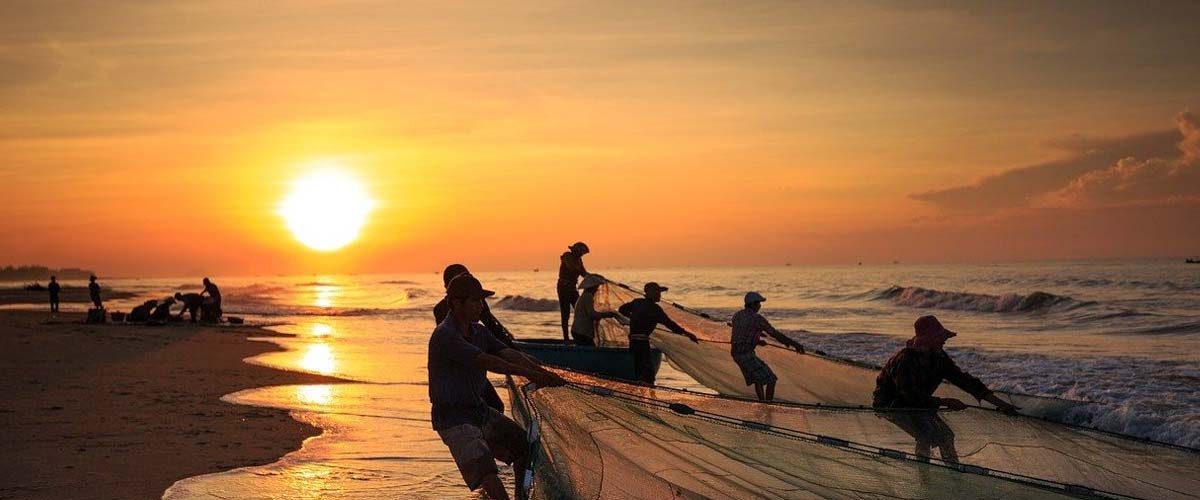In Bangladesh, fisheries sector plays a crucial role in the development of Bangladesh, socially as well as economically1. Fisheries sector is contributing 3.65% to GDP and 23.81% to the agricultural sector in this country2. Moreover, fish also supplies approximately 60% of the nation’s animal protein.
Fishermen are considered as one of the most helpless communities in Bangladesh. They are compelled to rely live on fishing for their livelihood by staying on the bank of the river from longer period. At present, they are facing huge pressure to live on the ancestral professions. Over the years, their economic condition has further worsened.
Moreover, several people (a lot of whom are living below the poverty line) have to adopt fisheries sector in the form of farmers, traders,processor, intermediaries, day labors as well as transporters3.
Fisheries sector is valuable for nutrition supplementation, socio-economic development, poverty alleviation as well as foreign exchange earnings of Bangladesh4. However, numerous issues are being created because of climate change, over-fishing, habitat loss, and pollution. All these factors are affecting fish biodiversity.
Therefore, scientists studied the accessibility of fish species, marketing channel and restraints linked with five fish market to provide suggestions for well-organized management as well as fish marketing system in Patuakhali district. For this purpose, primary data were collected by means of questionnaire interviews, participatory rural appraisals (PRA) and cross-check interviews with key informants5.
This study showed that fish including Rui, catla, thai pangus, silver carp, ilish, bata, tilapia species were most available in the market while species like kajuli, gutum, tara baim, pabda, sagor rita, rup chanda were rare. Moreover, chital and foli were very rare unfortunately because of fishing and habitat destruction of these species.
Conclusively, research team recommended enforcement of regulatory measure to protect habitat and lessen the over fishing, establishment of ice factory, enhanced electricity and water supply, buildingcold storage as well as modern communication system and in order to alleviate the issues linked with the fish market.
Key words: fisheries sector, socio-economic development, animal protein, habitat loss, over-fishing, climate, cold storage, modern communication system
References:
- Ali, M.M., M.B. Hossain, M.A. Rahman and A. Habib, 2014. Diversity of fish Fauna in the Chitra river of Southwestern Bangladesh: Present status, threats and recommendations for conservation. Asian J. Applied Sci., 7: 635-643.
- DOF., 2016. Matsha Pakkah Shankalan. Directorate of Fisheries, Department of Fisheries, Dhaka, Bangladesh, pp: 148.
- Islam, M.S., 1996. Manual on Socio-Economic Analysis in Aquaculture Research. Fisheries Research Institute, Mymensingh, Bangladesh.
- Hasan, M.R., M.A. Miah, M.A. Dowla, M.I. Miah and S.A. Nahid, 2011. Socio-economic condition of fishermen of the Jamuna river in Dewangonj upazila under Jamalpur distict. J. Bangladesh Soc. Agric. Sci. Technol., 8: 159-168.
- Md. Yusuf Ali, Shaharior Hossen, S.M. Oasiqul Azad, Md. Shahin Alom, Md. Anwar Hossain Mondal, Mir Mohammad Ali and Mohammad Belal Hossain, 2017. Fish availability and Marketing System at Local Markets of a Coastal District, Southern Bangladesh. Asian J. Animal Sci., 11: 221-229.
















Fishing gear type and selectivity could be issues in fishery development. But they were neither considered during investigation nor indicated in the report. Size and type of gear may have a lot of impacts on recruitment and population of various fish species. They should be focused on during the next investigation.